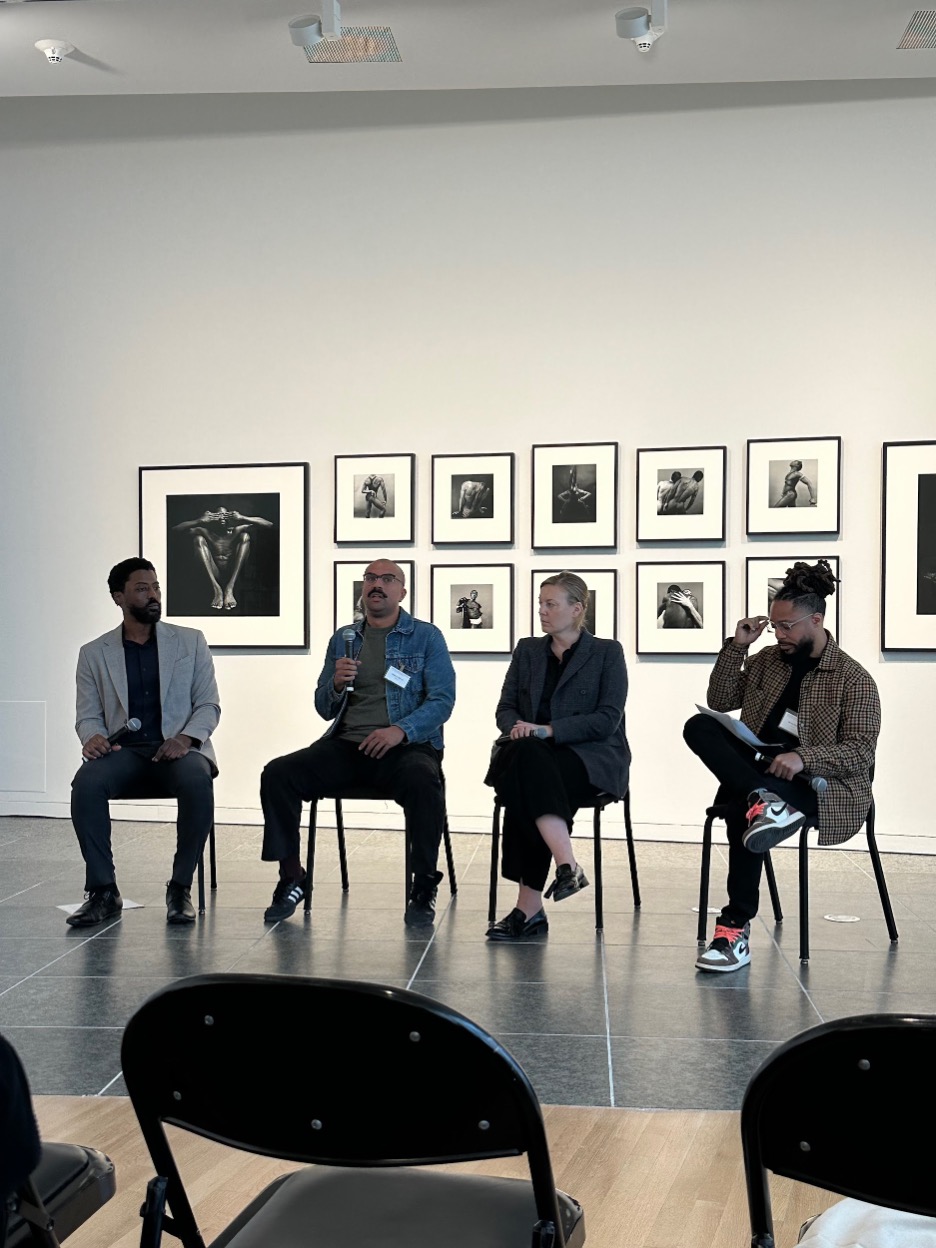Finding Artistic Inspiration in Ming Smith's Photography and Dance

On October 24, 2024, I had the honor of attending two conversation panels about Ming Smith at the Wexner Center for the Arts for the Lambert Photography Symposium. As a visual artist whose main practice is oil and acrylic paint, it was interesting to gain knowledge outside of my field and learn about Smith’s life and impact. To give you some background, Smith is a photographer from Ohio. She uses light to guide how she picks her subjects and goes against the grain by not adhering to traditional techniques. I even had the pleasure to meet Smith, watching her go around the gallery, taking pictures throughout the day as she took in the panels and events. She even took a picture of me, saying I was so pretty.
The first panel was led by Dr. Terron Banner, who asked questions that really highlighted her influence. Something that stood out to me was when he asked the panelists (Kelly Kivland, LeRonn Brooks, and Marcus Morris) to think about the impact of Ming Smith's legacy and how it is built on continuity. The main points included how the use of abstraction and figuration helps us understand ourselves as a community. Her vulnerable and experimental approach makes her work special and allows us to “think of oneself as an abstract vehicle for continuity” (Brooks).
There were quite a few questions about her technique and application, and the panelists shared how it shaped their own practices. For Morris, Smith’s work with performance and blur helped him create his own “working language.” He stated that blur creates a certain softness that you’re not typically taught when learning how to use a camera. He reflected on how Smith believes that energy is abstract and it brings in the intent to care for your subject, which is reflected in Smith’s work.

The next part of the day consisted of dance performances in each part of the gallery. It was an amazing connection point, as sound and performance are important factors in Smith's work. Kivland stated that Smith has been dancing as long as she’s been doing photography. It’s innate for her to incorporate it into her photography, making it a seamless part of her artistic practice. The first event was a solo performance in a darkly lit area to contrast the performer's bright white pants. The music was soft, and it reminded me of brown noise (which is similar to white noise but not as harsh). The second performance was by the same soloist to a mid-tempo beat. Many of the elements reminded me of moves I learned from West African dance classes. The last performance was a duet that included elements of spoken word from the dancers. It was meant to challenge the audience's comfort in relation to queerness.

After the performances was the second panel where the dancers spoke. As someone who’s had injuries and has let my current practice take over my love for dance (as much as I miss and still love it), it was interesting to hear about Smith’s ongoing relationship with the art form. Smith is 77 years old and still takes classes in Brooklyn, New York to this day. In some ways, she keeps her photography life and her dance life separate. Two of the panelists, who are from the studio she takes classes at, learned just recently that she’s a famous photographer. They’ve known her for years and just knew her as a dancer. I understood this as a humbleness coming from her, but I found it fascinating that even though movement in her photography is so integral, it’s not something she talks about more. Regardless, I could relate to this integration of work as an ex-dancer. I use a lot of dance poses as inspiration for the figures I paint. I feel that incorporating it makes the work more dynamic.
Smith’s impact, I believe, will be long lasting. The way she pushes boundaries by incorporating dance and blur into her work inspires artists to create their own styles beyond the techniques they are taught. She even inspired me, as someone who is not a photographer, to try new things in my work. This event was a refreshing experience, and if you weren’t there, I hope you look into her work and her life to encourage you to push the boundaries in your artistic practice and try new things.
